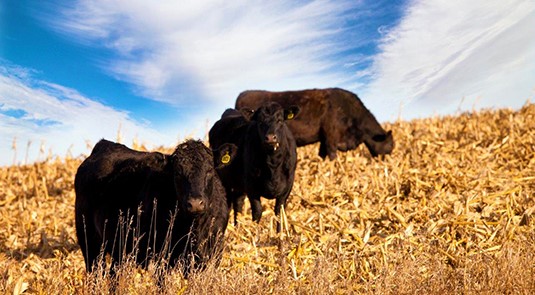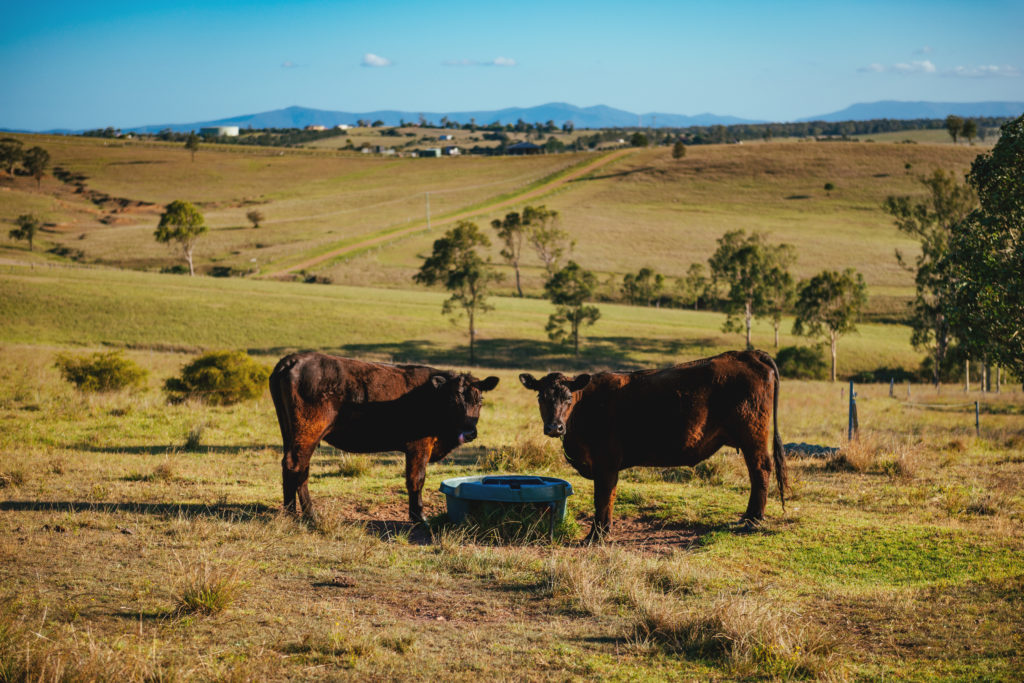
Early weaning calves (and lambs) is one of the most effective drought management strategies to help both your cows and calves through the drought. Cows and calves have very different nutritional requirements and by separating them early, each class of stock can be fed and managed accordingly.
Few would dispute that feeding a calf via its mother is both inefficient and expensive given the feed requirement of a dry cow is often only 50-65% of a cow with calf at foot[i]. All reserves go into the calf leaving the cow depleted and less likely to fall pregnant within the required time frame or joining period.
How early weaning helps the cow
During drought, late pregnancy and lactation (particularly the couple of months after calving), can have a drastic effect on the body condition score (BCS) of cows, particularly first calf cows. This can result in severe weight loss, low subsequent pregnancy rates, poor long term calf performance and possibly significant breeder deaths in extreme conditions[ii].
Early weaning therefore helps the cow maintain or regain her body condition which should be as close to 3 as possible if acceptable conception rates are to be achieved. It takes approx. 30MJ of energy for a cow to put on 1kg which equates to approx 2,100MJ to increase BCS from 2 to 3[iii].
Once her calf is weaned, she can be put onto drier feed or pasture (if available) and supplemented with a molasses-based product eg Molafos which contains energy, protein and essential minerals. If however no dry feed is available, she will need to be fed a complete ration.
When to wean
Ideally the longer calves can stay on their mothers without reducing her body condition the better. Therefore 4 months of age is preferable over 3 months which is preferable over 2 months. If possible, aim for approx. 12 weeks and an average of weaning weight of 100-120kg. While calves can be weaned as young as 6 to 8 weeks or 70kg, calves weighing less than 80kg should be given a form of milk replacement and concentrates while their rumens are still developing.
How to wean
Yard weaning is the most widely recommended form of weaning as it teaches calves how to feed, how to move around yards quietly and gets them very used to human contact. This can certainly pay dividends throughout their lives as they will be less stressed when brought into the yards for animal husbandry practices, weighing or transportation.
Depending on what the calves will be fed, it may be advisable to introduce the feed to the calves a few days before weaning, perhaps via a creep feeder, to get them used to such a big change in diet and method of feeding.
It is also important to ensure there is adequate clean water available at all times (preferably away from the feed troughs) and sufficient trough space for all calves to feed at one time (ie approx. 30cm/calf). Minimising dust is also strongly recommended to reduce infections such as pinkeye and respiratory diseases.
What to feed
It is important to always feed calves for growth, not maintenance. The feed offered to calves weighing around 100-120kg should contain at least 11 MJ ME/kg dry matter (DM) and at least 16% crude protein. Molasses, grain and roughage can all be fed to calves at this age though grain must be introduced gradually to avoid acidosis ie starting with approx. 300g/hd/day and increasing the amount by 100g/hd/day. Supplementing the mix with a buffer such as sodium bicarbonate will also help prevent acidosis. Ad lib access to hay is important.
Younger calves need feed sources which contain higher levels of protein (18-20% true protein) and higher energy (12MJ ME); eg calf pellets, various meals CSM, sunflower meal, copra meal or canola meal.
Using a feed calculator can help you determine a least-cost ration and calculate the cost per unit of energy, protein and per kg of DM fed.
Other benefits
- Better use of feed supplements ie high energy and protein feeds can be fed to young growing stock while lower quality feeds (poorer hay/straw) can be fed to dry cows.
- Quieter stock
- If done properly, calves can be kept on a rising plane of nutrition.
- Early weaning can reduce water requirements of cows by up to 60% or cows to regain condition if they are to conceive within the joining period[iv]
Ration Evaluation and Formulation
GrainCorp Liquid Feeds provides a complementary ration evaluation and formulation service to ensure you are feeding your stock a balanced ration containing sufficient protein, energy and minerals to achieve your production targets.




